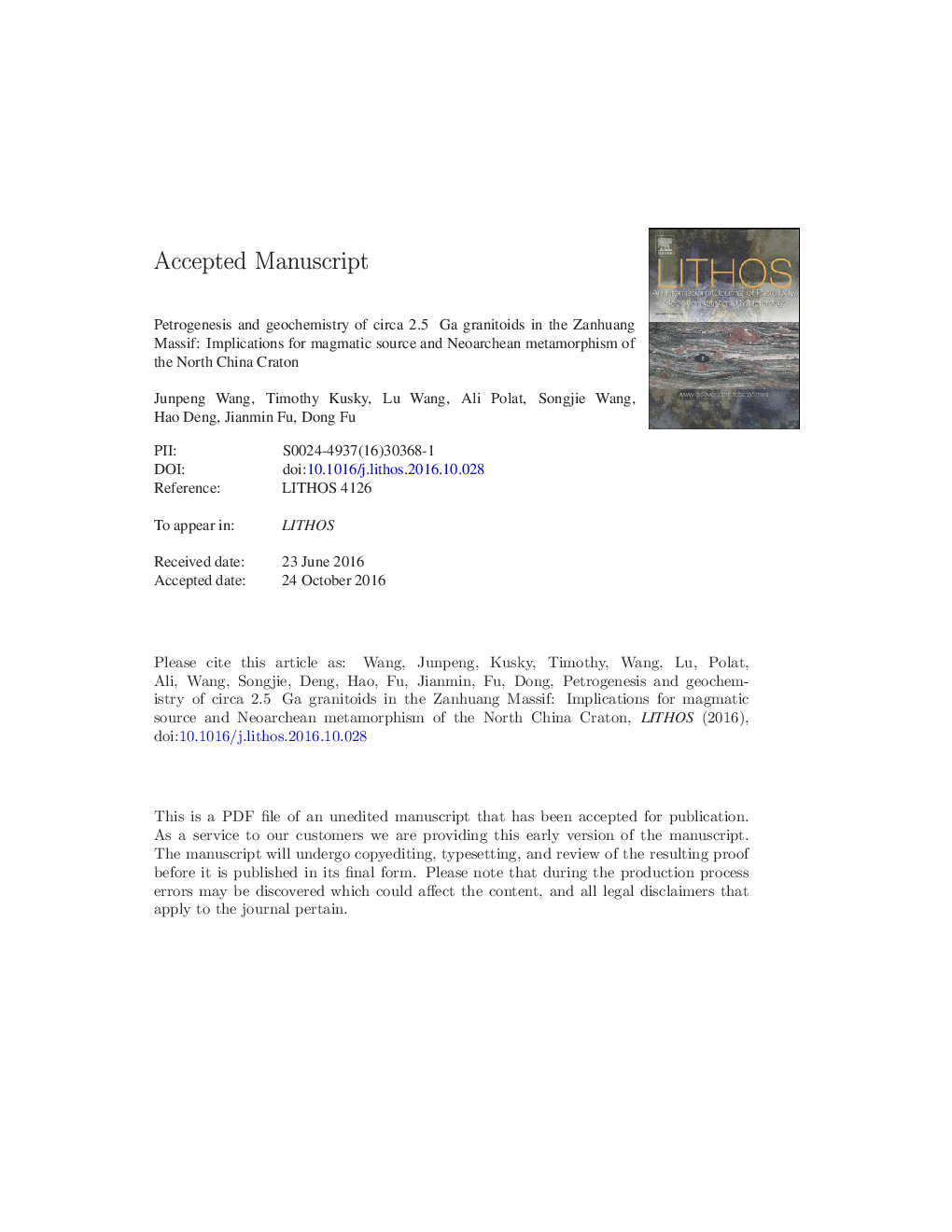| Article ID | Journal | Published Year | Pages | File Type |
|---|---|---|---|---|
| 5784343 | Lithos | 2017 | 61 Pages |
Abstract
The tectonic framework of the North China Craton (NCC) during late Archean to early Paleoproterozoic (circa 2.5 Ga) is still lacking comprehensive understanding due to subsequent strong deformation and metamorphic overprinting events. Circa 2.5 Ga magmatic and metamorphic activities are widely spread throughout the NCC, which can be used as an efficient target to better understand the tectonic evolution at this period. In this study, based on a detailed field, structural, geochemical, geochronological and Sm-Nd isotopic study, we focus our work on the Haozhuang granitoids in the Zanhuang Massif located at the eastern margin of the Central Orogenic Belt of the NCC. The granitoids mainly include undeformed pegmatite and granodiorite. One pegmatite and two granodiorite samples yield zircon 207Pb/206Pb ages of 2513 ± 29 Ma, 2511 ± 36 Ma and 2528 ± 18 Ma, respectively. The granodiorites show metaluminous and shoshonitic to high-K calc-alkaline series characteristics with A-type granite affinity. The circa 2.5 Ga granodiorites have highly negative εNd(t) values (â 29.22 ~ â 33.12) and TDM model ages between 2671 Ma and 3151 Ma. This work shows clearly, from whole-rock major and trace elements and Sm-Nd isotopic studies, that the Haozhuang granodiorites were derived from partial melting of old and thickened TTG crust rather than mantle sources, and formed in a subduction-related tectonic setting. With geochemical comparison studies to other similar-aged granitic rocks in the Zanhuang Massif, we suggest that these granitic rocks possibly have a certain correlation during the magma evolution. Coupled with our previous geochemical and isotopic studies on circa 2.5 Ga mafic dike swarms, we propose that the similar-aged granitic rocks and mafic dike swarms were produced by an east-dipping subduction polarity reversal event following an arc-continent collision between the Fuping/Wutai island arc and Eastern Block of the NCC above a west-dipping slab. The east-dipping subduction resulted in partial melting of the enriched lithospheric mantle, firstly forming the circa 2.5 Ga mafic dikes inducing the widespread circa 2.5 Ga metamorphism in the Central Orogenic Belt and the Eastern Block, and then the parental magma of these mafic dike swarms heated the old and thickened TTG crust causing the formation of similar-aged granitic rocks at a later stage.
Keywords
Related Topics
Physical Sciences and Engineering
Earth and Planetary Sciences
Geochemistry and Petrology
Authors
Junpeng Wang, Timothy Kusky, Lu Wang, Ali Polat, Songjie Wang, Hao Deng, Jianmin Fu, Dong Fu,
